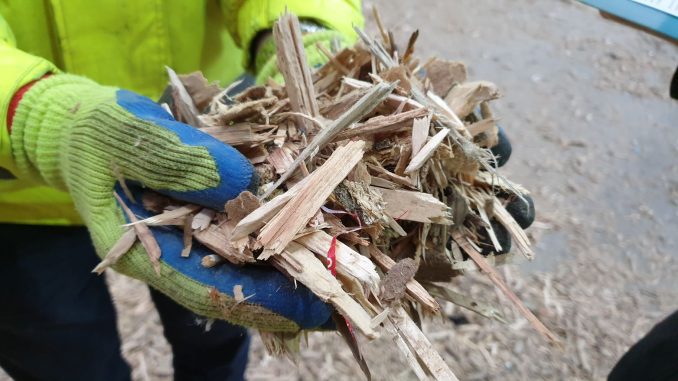
Dan Ridley-Ellis and I visited and interviewed a number of companies in the last few months. We wanted to find out what happens to timber after its first life. If you´d rather watch a video than reading the post, I talked about timber recycling at the Timber 2020 online conference and also made a short video about demolition for our InFutUReWood conference last month.
Demolition
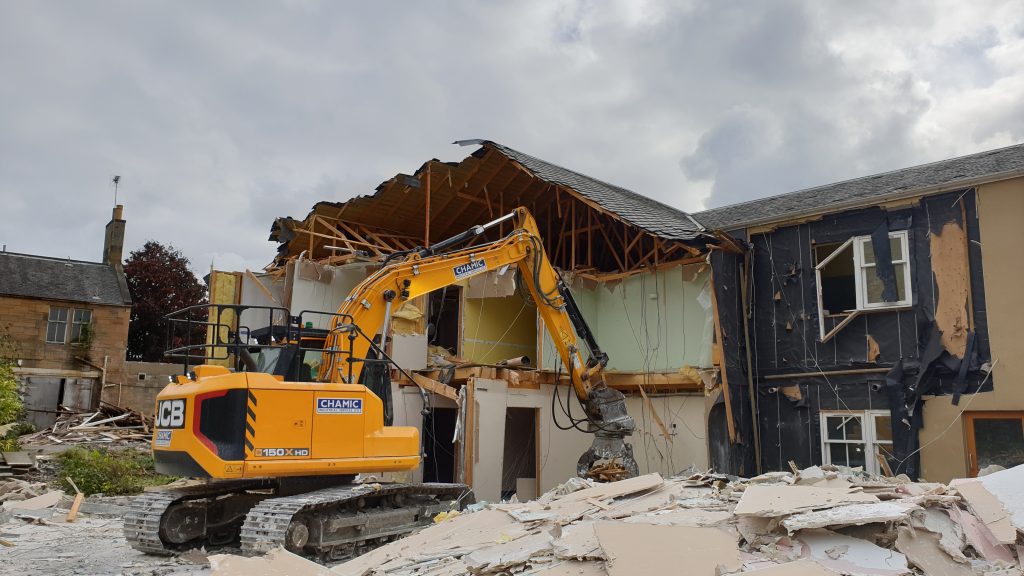
We started by contacting demolition companies, but unfortunately only one of them was willing to answer our questions. Luckily Michael Hunter from Chamic was very helpful in supplying information and even arranged a site visit of one of his demolition projects for us. We saw that timber from building demolitions is not necessarily very old or in a bad condition – before it comes out of the building. Aftwerwards however, it is in no state for reuse, because of how demolition machines/ the industry work. Buildings have to be demolished quickly, because time is money. Keeping materials intact is usually not required, because the recycling paths for concrete, metal and timber include their desintegration anyway. The materials are pulled out of the building by an excavator with a hand-like tool. Then they are sorted into skips and sent to recycling.
What happens to the timber skip?
We did some literature research to find out what happens to recovered timber in the UK. Our findings are summarised in the diagram below, but since the numbers we used are from various publications [1] – [6] and not all from the same year (but most from 2018 or more recent), the numbers presented are only estimates. Also note that the fraction of impurities (metal, glass, stones,…) separated from the wood is not quantified since we don’t have any data on that. Data is also lacking on the share of hazardous wood and companies are only assuming it is less than 1%. The WRA is currently implementing a study on this topic and is in need of samples from demolition sites!
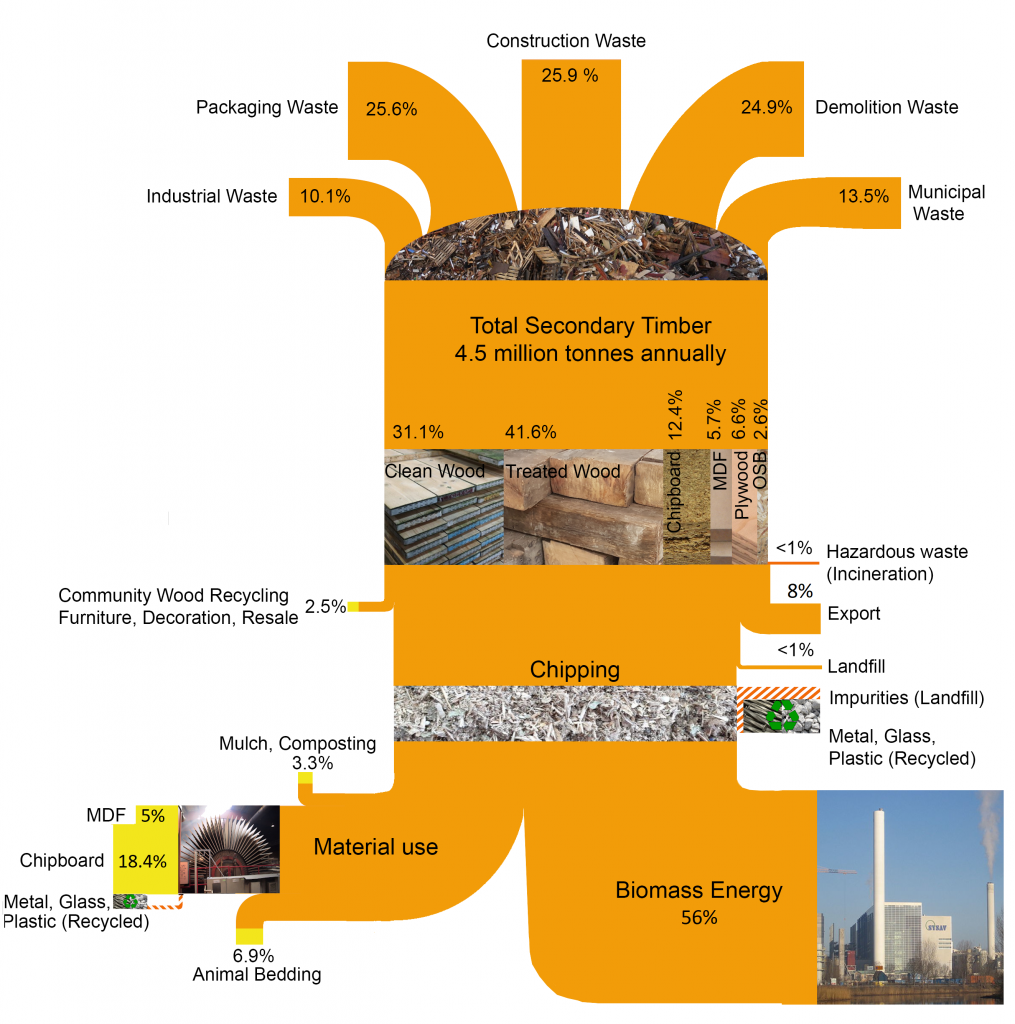
Reuse or Up-cycling
Waste wood does not only come from demolition sites, but also from the construction inducstry (leftovers, scaffolding, on-site reject), from packaging, industrial and municipal waste. From the diagram you see that the vast majority of all that timber is chipped. Only about 2.5% of the material is kept in it’s original form for reuse or re-manufacturing. Companies who collect and resell this material are architectural salvage companies, timber floor merchants and community wood recycling companies. Move On Wood Recycling and Glasgow Wood recycling are two companies of the latter category that we had the chance to visit. Both companies collect used wood to make furniture from it or resell it for DIY projects. Both companies are convinced that for these purposes used wood is just as good as new wood. The only problem they experience is the contamination with nails and other metal fasteners, that need to be removed by hand. But the eager volunteers just see that as part of the process. Other defects or the “scrappy” appearance are often seen as features – the used character of the wood is desired by the customers. Neither of the companies experiences a lack in supply of recovered timber, they rather receive more than they can store sometimes. Both of the companies work on a relatively small scale and only purchase a few hundred tons of wood per year. Both say that the only limits to processing more timber are the number of volunteers and area of storage space.
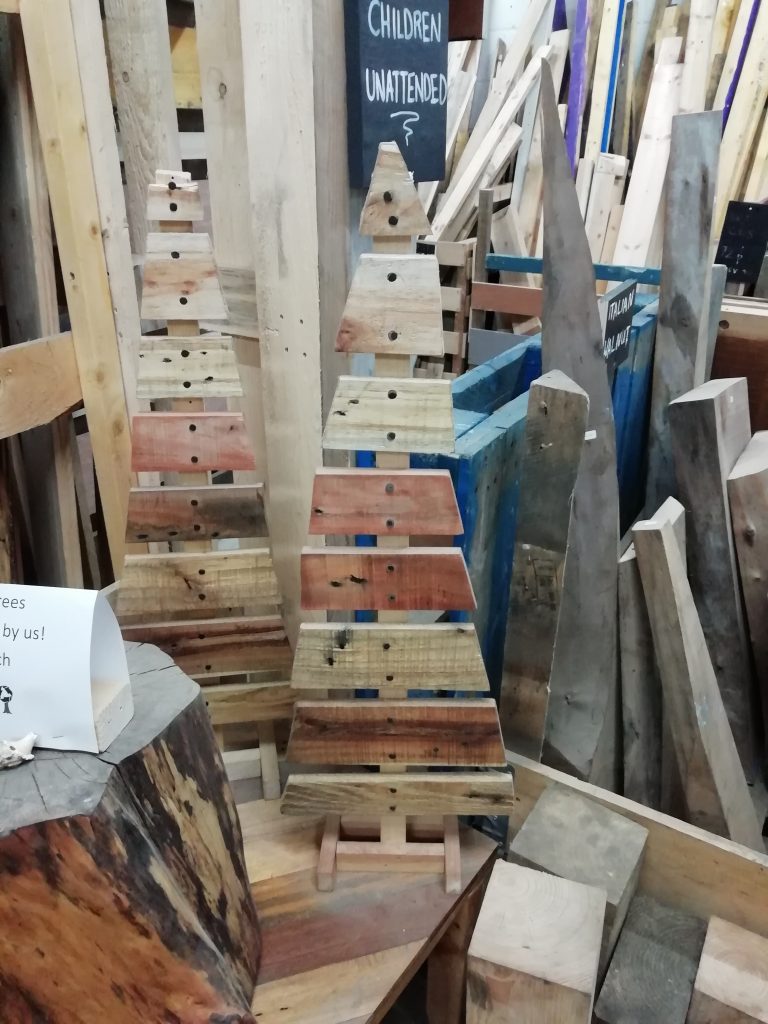
Recycling or Down-cycling
The bigger wood recycling companies who produce chips receive much higher volumes of timber (several hundred tons per week). We visited three companies who produce wood chips for the production of boards or animal bedding: ENVA, Hamilton Waste and Recycling and Timberpak. All of these companies see the recovered wood market under high demand, mostly due to the rising biomass energy sector in the UK. Over 10 years the share of recovered wood used for energy production rose from approximately 17% in 2008 [8] to 56% in 2020 [9]. As a consequence the prices for recovered timber rose and at times only the government’s Packaging Recovery Note are what tips the scale to making board production profitable. But at the same time the government is criticised for subsidising the biomass sector. Not only the wood recycling industry suffers from this, but also a lot of virgin timber is directly used for wood fuel (more than 2 million tons of homegrown timber per year and additional imported pellets). This seems like a rather wasteful approach, if you bear in mind that this timber could have a first, second and third use before eventually being used for energy recovery. On the other hand, the enhanced biomass use prevents a lot of timber from going to landfill – nowadays it’s less than 1%.
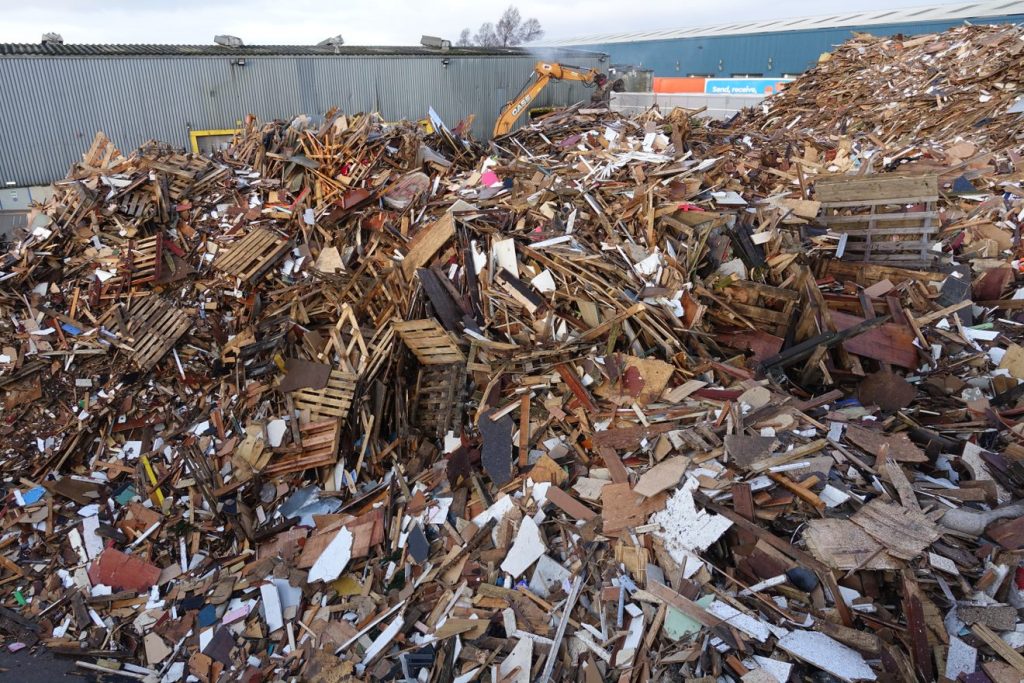
The three companies we visited are at least enabling a second use for recovered timber. Depending on which kind of products they make, the used wood is either sorted according to quality, or everything is processed together. For the production of animal bedding only the highest quality timber can be used, which is why ENVA is carefully sorting all wood they receive using a system aligned with the WRA wood waste classes (find them explained here). ENVA also encourages waste wood collectors to sort the wood more strictly and remove adjunct material. The other companies use the waste class system only for price calculations. In this case the wood waste is a mix of all kinds of timber members, chipboard, MDF and plywood, but also other kinds of materials that ended up in the wood skip by accident or are attached to the wood, like plastics, cushions and metals. Most of the timber is already broken from demolition processes or for easier transport. In the beginning MDF and non-wood material needs to be sorted out manually, since it cannot be recycled in boards. Afterwards all material is shredded and sorted by hand again. Ferrous metals are separated using magnets, non-ferrous ones with an eddy current. The remaining material is then chipped and further sorted using air classification, float classification, magnets and sieving (most of the processes several times). The resulting product is wood chips in different qualities like you see below. The higher quality chips that contain very little contamination can be used in animal bedding or chipboard. The lower classes are used for energy recovery. Nearly all materials that were separated during the process are themselves recycled in other facilities
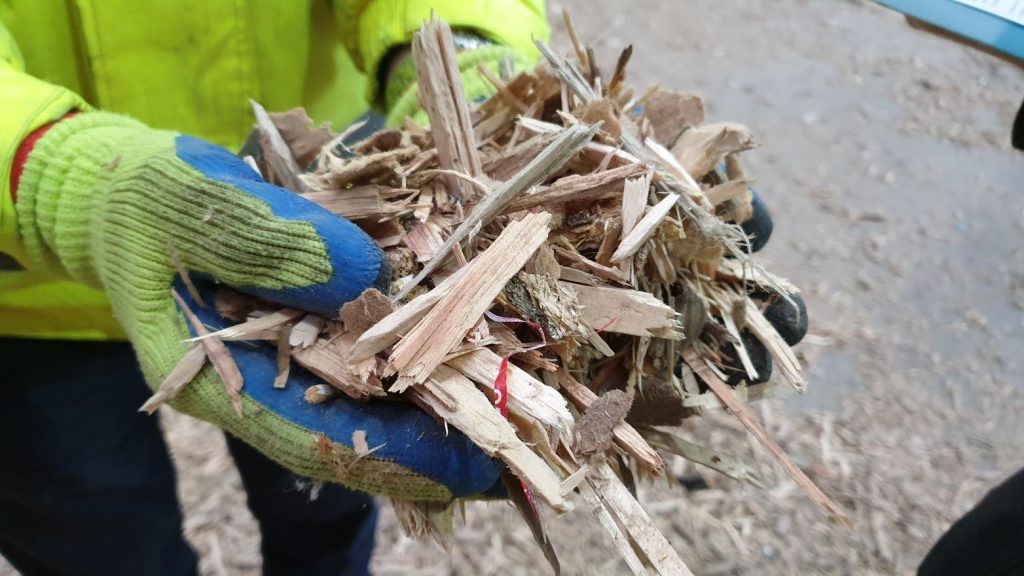
High class chips 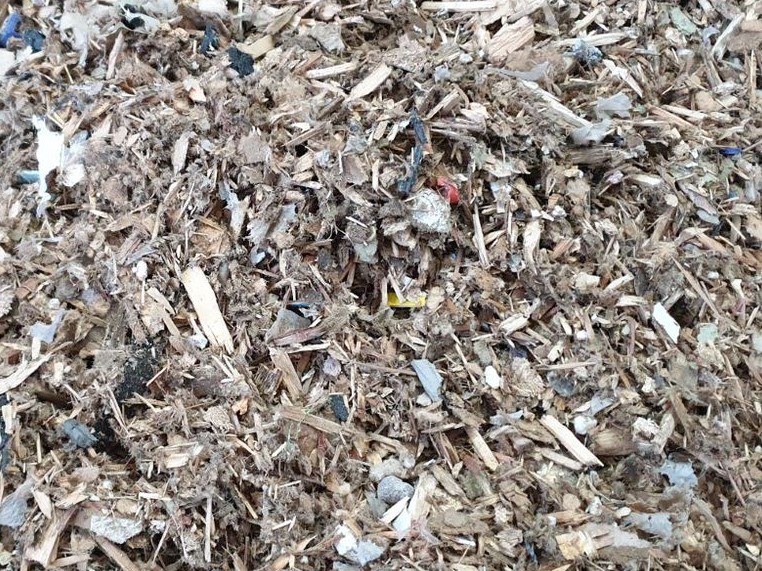
Low class chips
From Chips to new Products
We also visited two companies who are using the chips to produce chipboard and MDF, EGGER and Norbord. The companies use between 40 and 70% recycled wood in their products. The rest is virgin timber from roundwood and sawmill residues. The virgin material balances the varying properties of the recovered wood, so the input material is relatively uniform. The recycled chips are again sorted and cleaned in various steps (just as in the chipping facilities), to remove most of the impurities. Also the chips need to be tested for contamination with wood preservatives and heavy metals, which is done using colour indication and performing tests in an on-site lab. Afterwards the chips are resized or refined depending on their future use. Size fractions are separated for use in different layers of the boards and all material is dried using the heat from a biomass boiler. Recovered timber has a lower moisture content than virgin timber, so less energy is required for drying. In the following steps, glue is applied and the boards are pressed, conditioned, cut to size and sanded. The offcuts can be reused in the process and the sawdust is used as woodfuel to generate heat for drying and pressing. Secondary MDF, since it cannot be reused in boards, is also incinerated.
In the production of boards the environmental benefits go hand in hand with economic benefits when it comes to the use of recovered timber instead of virgin timber and closed-loop material use. Only in the high-quality furniture grade no recycled wood can be used. The risk is too high that contaminations, in form of a piece of plastic or metal, could ruin the appearance of a board.
Is there greater Potential?
Of course, we were wondering if the recovered wood could be reused for other purposes before chipping. Most of the companies were very pessimistic regarding any structural or high-value use. Recycling companies claimed that the demolition contractors won’t recover the material carefully to preserve its integrity. On the other hand, demolition companies stated that generations ago nearly all material could be recovered for reuse, but the demand for used materials declined and this is why their business changed. Nowadays the recycling streams for wood don’t require the material to be intact – it will be chipped anyway. The technology used for demolition is on a high technical level and could be used to disassemble parts, as long as the strict health and safety regulations allow it. So if we could find methods to allow the structural reuse of timber, the supply of material is only a question of demand. And this wouldn’t disturb current practices either, since in the next cascading step the wood can still be used in chipboard or animal bedding, and lastly as biomass. One problem is that now the recovered timber market is at capacity to supply the biomass energy and chipboard sector. Another problem is that the industry doesn’t seem to be particularly interested in using secondary timber. But the InFutUReWood project might be able to arouse their interest, by proving the feasibility of structural secondary timber and through the development of innovative products. And we shouldn’t underestimate the influence of the society. If there is demand for sustainable, local, scrappy but also charming secondary timber, the industry will react. So why don’t you check the local community wood recycling centre for your next DIY project?
Find the closest Community Wood Recycling Centre
Update 23/11/2020 Thanks to Charlie Law for letting us know that far less wood waste is going to landfill nowadays. Corrections are incorporated in the Sankey diagram.
Update 08/03/2021 Thanks to Joseph Harvey for telling us that we need to update our source links.
[1] Pöyry Forest Industry Consulting Ltd and Oxford Economics Ltd, Wood Waste Market in the UK
[2] Defra (UK Government) Wood waste: A short review of recent research
[3] TRADA 2020, Recovering and minimising waste wood
[4] Forestry Commission – Forestry Statistics 2019
[6] Community Wood Recycling Environmental and Social Impact Annual Report 2017-2018
[7] UK Government Renewable Sources of Energy
[8] WRA Wood Market Situation Report
[9] Letsrecycle.com 2019, Biomass demand for waste wood soars in 2018
Picture credit for pictures used in the diagram goes to: D-Kuru, Vaderluck, Bystander, Lionel Allorge, jorchr, Gausanchennai, Raysonho @ Open Grid Scheduler / Grid Engine,D-Kuru,MatthiasKabel and Joe Mabel

Leave a Reply
You must be logged in to post a comment.